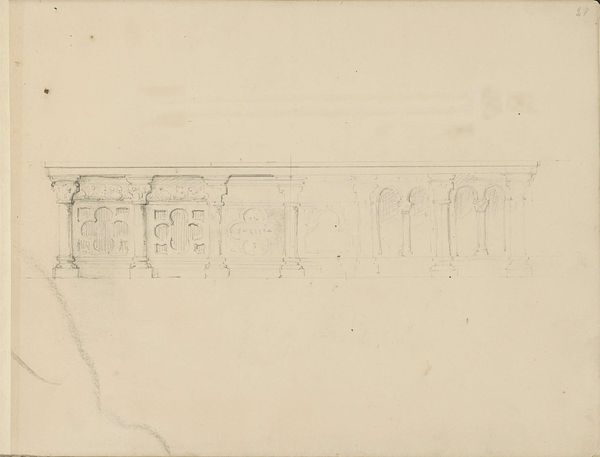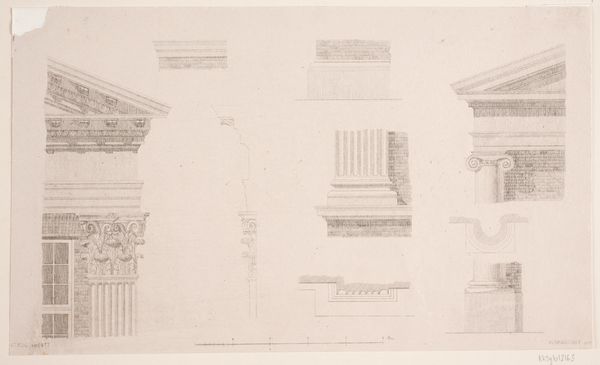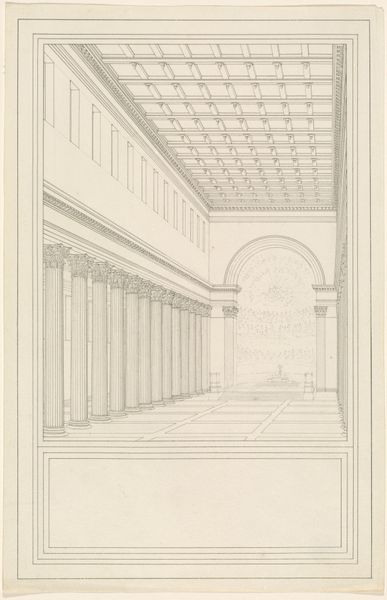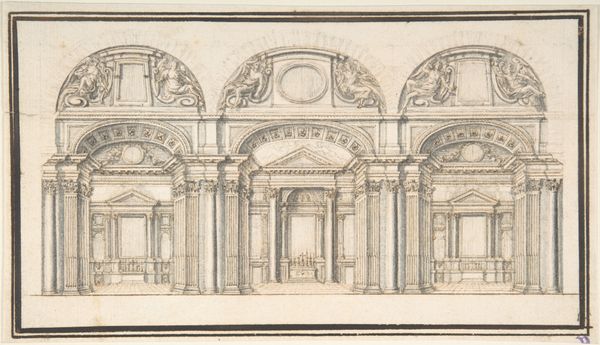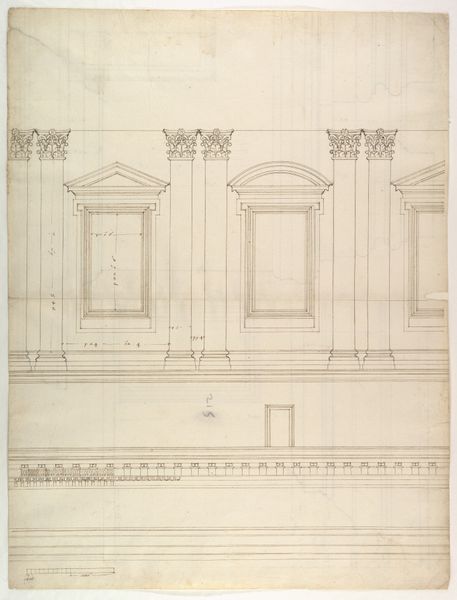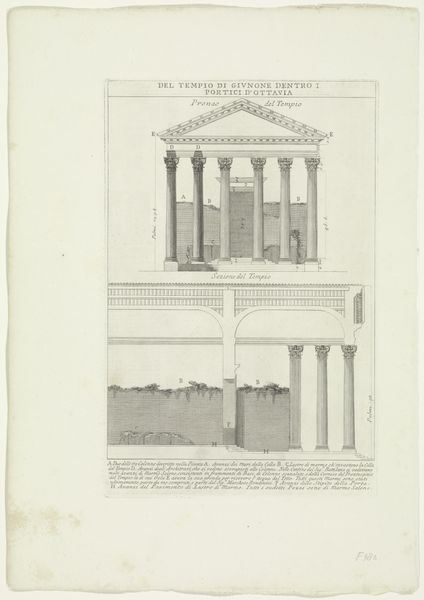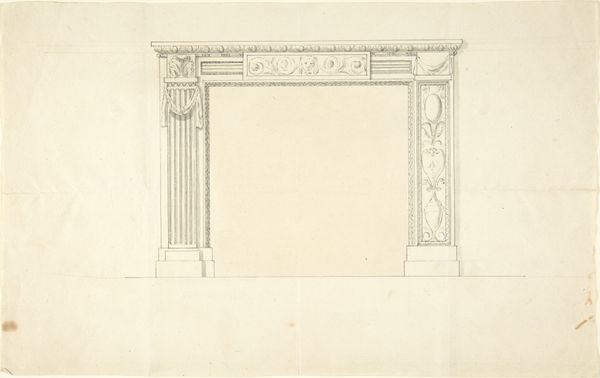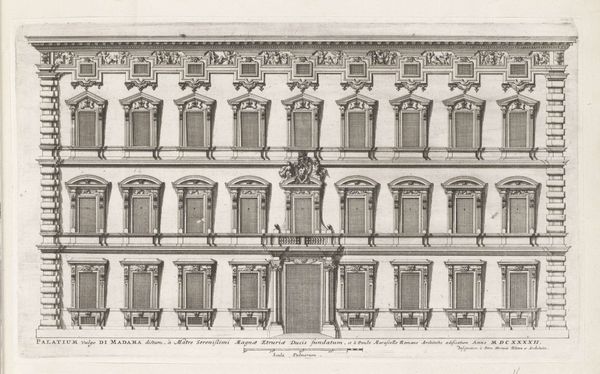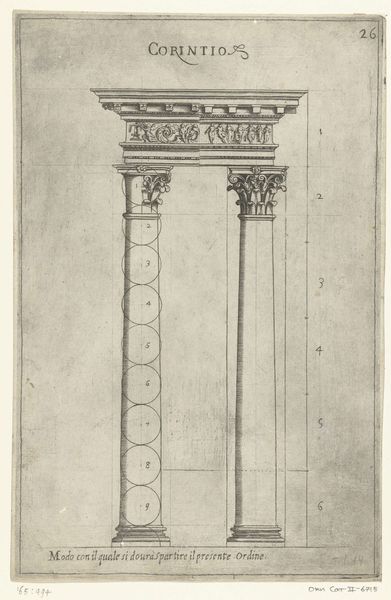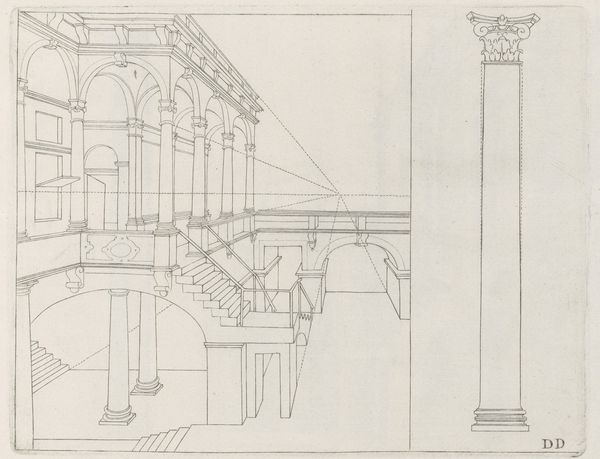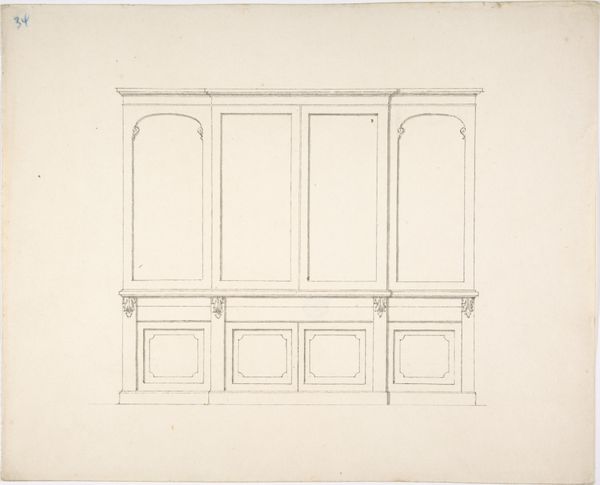
print, etching, engraving, architecture
#
baroque
# print
#
etching
#
landscape
#
etching
#
engraving
#
architecture
Dimensions: height 215 mm, width 347 mm
Copyright: Rijks Museum: Open Domain
J. Baugin made this etching titled 'Aquaduct in Orange' in 1639. It depicts a section of the Roman aqueduct in Orange, France, a structure that once symbolized Roman power and engineering prowess. In the 17th century, views of ancient ruins were more than just architectural studies. They carried a heavy weight of cultural and political meaning. For viewers of the time, a Roman aqueduct might evoke themes of power and control in the landscape. But it also prompts questions of access and privilege. Who benefited from this infrastructure, and who was excluded? How did the aqueduct shape the lives of different social classes? As water was essential for life and agriculture, controlling its distribution meant wielding significant influence. Ultimately, Baugin’s etching invites us to reflect on how infrastructure can embody both progress and inequality. It encourages us to think critically about whose needs are prioritized in the built environment.
Comments
No comments
Be the first to comment and join the conversation on the ultimate creative platform.
